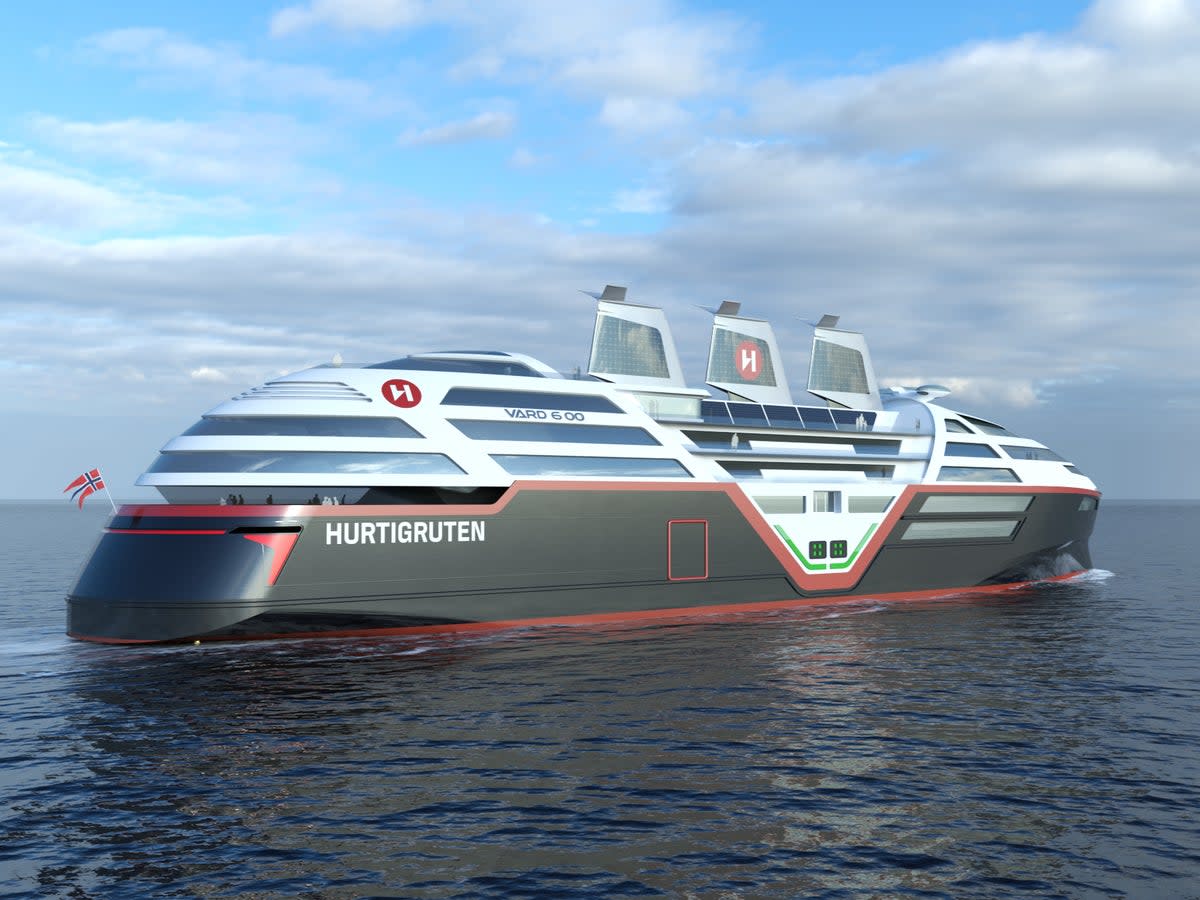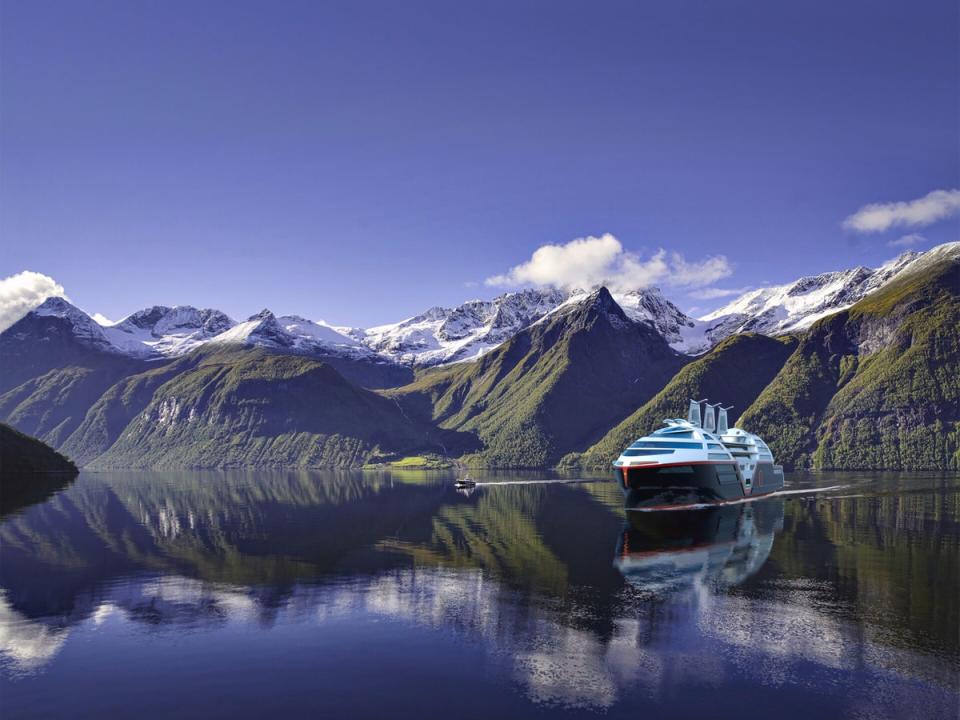Solar panels and ‘AI manoeuvring’: Hurtigruten unveils its first zero-emissions cruise ship

Cruise line Hurtigruten Norway has released early design concepts for its first zero-emissions ship, with the launch set for 2030.
Features include 50m (164ft) retractable sails fitted with solar panels, AI manoeuvring and retractable thrusters – described by the operator as “firsts and improved solutions” that “do not exist on cruise ships today”.
The Norwegian firm, which will bring the electric ship into its Coastal Express fleet, is this year celebrating 130 years of sailing.
The new ship will run on a combination of energy from a 60-megawatt battery and wind technology, charging up with renewable energy when it’s docked in port. Battery levels will be displayed on the sides of the cruise ship.
Passengers will be able to measure their own water and energy consumption through a mobile phone app, as well as using it to control the ventilation in their cabins. There will be 270 cabins in total, with enough space for 500 passengers and 99 crew.
Hurtigruten first announced plans for a zero-emissions ship in early 2022, with the project dubbed “Sea Zero”.

Hedda Felin, the CEO of Hurtigruten Norway, said that, at the time of the launch, the line was “faced with the challenge of not knowing which technologies would be available to us in 2030”.
“Following a rigorous feasibility study, we have pinpointed the most promising technologies for our ground-breaking future cruise ships. We are committed to delivering a ship that surpasses all others in terms of energy efficiency and sustainability within just a few years,” she added.
In 2019, sister company Hurtigruten Expeditions introduced the world’s first battery-hybrid ship, MS Roald Amundsen.
While work is ongoing on the new ship, Hurtigruten is currently undertaking what it calls “one of the most extensive environmental upgrades in European maritime history” with its existing fleet.
Two of Hurtigruten Norway’s seven ships have been upgraded to ships powered by battery-hybrid energy, with a third to be ready in the autumn. The other vessels are being fitted with technology which will cut CO2 emissions by 25 per cent, and nitrogen oxides by 80 per cent, the company said.

 Yahoo News
Yahoo News 
